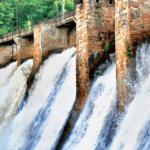The Government of Nepal presented Nepal’s economic survey on 26 May, with consideration of the data until mid-March 2020. Given below are a few key highlights from the survey:
Economic Growth Rate
- Even with decent overall economic activities up till mid-March, the COVID-19 pandemic greatly impacted growth targets. Primary estimations show that Nepal’s economic growth rate will be 2.3%.
- The economic growth rate was estimated to be the highest in Sudurpashchim Province with 4.1% and the lowest in Bagmati Province with 1.2%. Similarly, the growth rate is estimated to be 3.4% for Province 1, 2.3% for Province 2, 2.7% for Gandaki Province, 2.0% for Province 5, and 3.6% for Karnali Province.

Per capita GDP
- The per capita GDP (in prevailing price) for the FY 2019/20 is estimated to have increased by 7.5% to NPR 126,018 (USD 1,085) in comparison to the last fiscal year.
Growth and Contribution of Broad Economic Groups to the GDP
- The growth rate for the primary sector, secondary sector and tertiary sector are estimated at 2.5%, 3.4% and 2.0% respectively. Similarly, their contribution to the GDP is estimated at 28.2%, 13.7% and 58.1%, in the same order.

Inflation
- The average inflation rate during mid-March was 6.5%. In the past fiscal year, the average inflation rate was 4.2%.
Total Consumption, Total Household Savings and Total Investments
- Total consumption and total household savings are estimated at 81.9% and 18.1% of the GDP.
- Due to the COVID-19 pandemic, total investment has shrunk by 3.4% to NPR 1,889.26 billion.
Absolute Poverty
- The absolute poverty for FY 2019/20 is estimated to be around 16.67%. In FY 2017/18, it was around 18.9%.
Government Expenditure
- The government expenditure for the FY 2019/20 up till mid-March increased by 12.9% to NPR 610.68 billion
- Within the government expenditure, current expenditure was NPR 450.78 billion, capital expenditure was NPR 96.48 billion, and for financial management was NPR 63.42 billion.

Revenue
- Up to mid-March of FY 2019/20, the revenue collected in the federal reserve fund and divisible fund grew by 9.4% in comparison to the last fiscal year to NPR 543.79 billion. In this, NPR 497.54 billion were tax revenues and 49.25 billion were other revenues.
- The federal government revenue up till mid-March of FY 2019/20 increased by 9.6% in comparison to last fiscal year to NPR 479.71 billion.
Debt
- The Nepal government, as per data of up till mid-March of FY 2019/20, has a public debt of NPR 1,139.80 billion, amongst which NPR 440.05 billion is internal debt and NPR 699.75 billion is external debt.
Foreign Assistance
- Up till mid-March of FY 2019/20, a total development assistance commitment of NPR 109.28 billion has been received, where NPR 16.19 billion is grant and NPR 93.09 billion is loan.
Remittance Inflow
- The remittance up till mid-March of FY 2019/20 increased by 1.8% to NPR 592.42 billion. In the past fiscal year, remittance inflow during the same period was NPR 582.19 billion.
Other Highlights
- 61% of the citizens have at least one account in banks and financial institutions.
- 22% of the citizens have access to insurance. While including migrant workers gone for foreign employment, the population with access to insurances is 26%.
- 90% population in Nepal have access to electricity.
- 62.2% of the population in Nepal live in city areas.
- 90% of the population have basic drinking water facility.
Ishan Bista is an MPA candidate with a concentration in Economic and Financial Policy at Cornell University. He previously graduated with a BBA degree from Kathmandu College of Management, Siam University with a major in Marketing and Branding. His keen interest and aspirations lie in the area of public policy and economics. He previously worked as a research fellow for Nepal Economic Forum.





